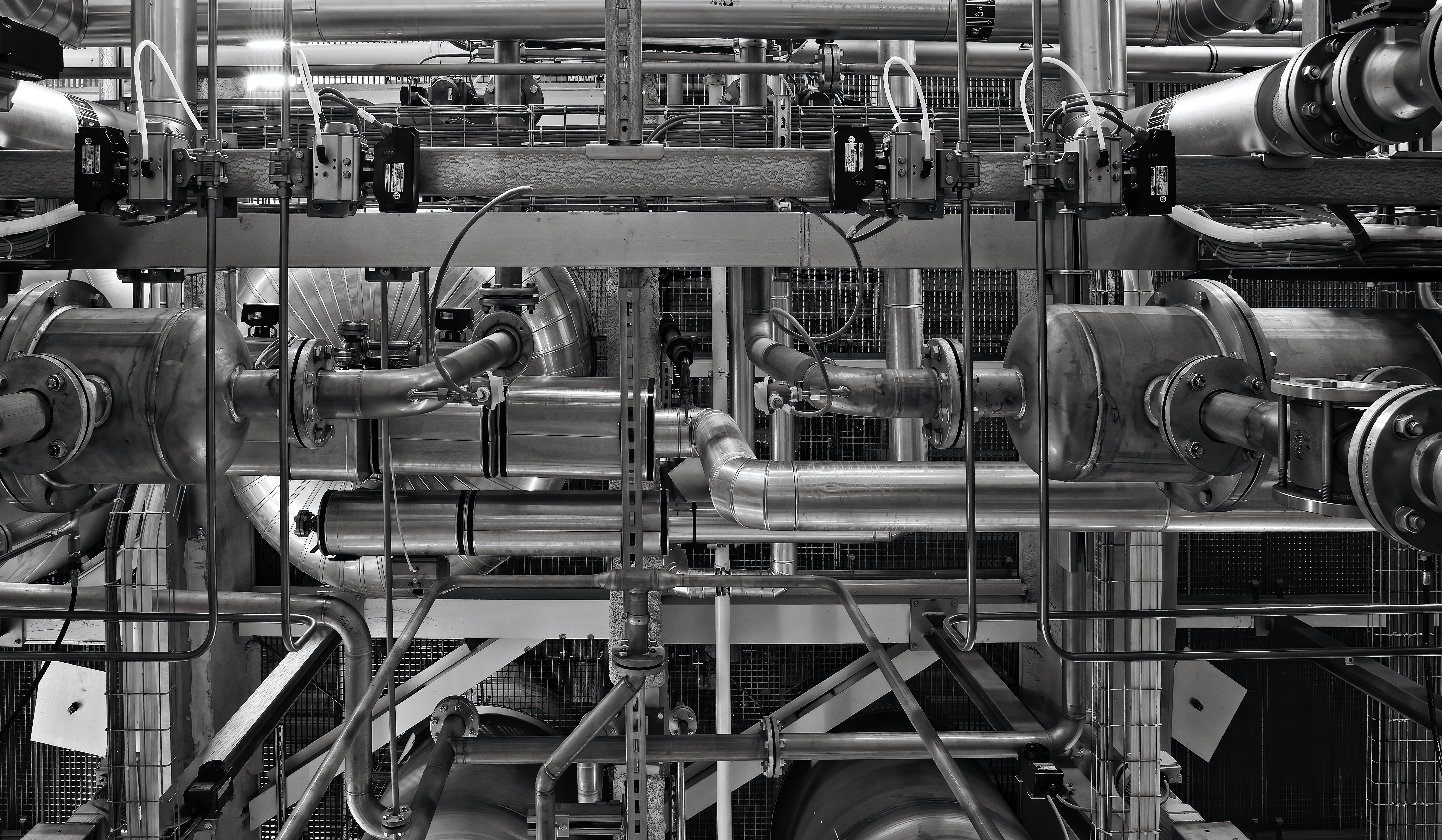
Are you tired of the escalating utility bills due to heating and cooling your home? Have you been experiencing discomfort in your living space due to temperature imbalances? If so, there’s good news – technological advancements have brought about groundbreaking ways to heat and cool your home efficiently and effectively. Say goodbye to exerting your air conditioners and heaters to their fullest capacity – here are five innovative ways to heat and cool your home like never before.
Running traditional air conditioners and heaters leads to large amounts of energy consumption, which in turn leads to high utility bills. This is detrimental to your finances and the environment, given that fossil fuels account for close to 70% of energy use in US homes.
In the United States, heating and cooling comprise about 48% of the energy use in an average home, making it the largest energy expense for most households. This situation is worsened by the fact that many heating and cooling units are inefficient, leading to unnecessary energy waste. It’s always worth getting an HVAC specialist and a local plumber, such as a Houston plumbing service, to look at how your current system can be improved. With energy prices on the rise and the looming threat of climate change, American homeowners are increasingly concerned about their heating and cooling usage. Not only do they worry about the financial impact of high energy bills, but there’s also a growing awareness about the environmental implications. Every kilowatt-hour of electricity consumed contributes to greenhouse gas emissions, and with the residential sector accounting for a significant portion of total energy consumption, reducing this can have a profound impact on our planet’s health. Thus, seeking innovative and energy efficient heating and cooling solutions is not just a matter of personal comfort or financial savings, but also a step towards environmental stewardship.
If you’re interested in finding more innovative ways to heat and cool your home, here are five ways you can do just that.
1. Geothermal Heat Pumps
Geothermal heat pumps use the heat produced by the earth’s surface to provide heating and cooling solutions. They may be more expensive to install, but they save over 70% in utility costs due to their high efficiency. Geothermal heat pumps, also known as ground-source heat pumps, leverage the constant temperature of the earth below the frost line to heat and cool homes. During winter, the heat pump extracts the earth’s natural warmth through a series of pipes, called a loop, installed below the ground. This heat is then increased and distributed throughout your home. Conversely, in the summer, the process is reversed. The heat pump removes heat from your home and transfers it back to the relatively cooler earth via the loop system. This efficient process of harnessing natural heat reduces the energy requirement for heating and cooling your home, thus leading to significant cost savings and reducing environmental impact.
2. Passive Solar Design
Passive solar design keeps homes cool in summer and warm in winter by consciously designing windows, insulation, and heat storage to maximize the use of the sun’s heat.
Passive solar design utilizes the sun’s energy to maintain a comfortable temperature in the home without the use of mechanical systems. It involves positioning the house in such a way that it can take full advantage of the sun’s path throughout the day. For instance, in the northern hemisphere, a house with ample south-facing windows can capture maximum sunlight during winter, when the sun is low in the southern sky. By contrast, during the summer when the sun is high overhead, overhangs or shades can be used to limit solar heating, preserving the cool indoor temperature.
The construction materials used in a passive solar home play a critical role in its efficiency. Materials with high thermal mass, such as concrete or brick, store heat during the day and release it at night, maintaining a steady indoor temperature. Furthermore, the use of super-insulated windows can prevent heat loss in winter and heat entry in summer, further optimizing energy consumption.
Lastly, ventilation is an integral part of passive solar design. During summer nights, windows and vents can be opened to allow cool air to enter the home and push out hot air, promoting night-time cooling. Consequently, passive solar design not only reduces energy costs but also contributes to a sustainable and eco-friendly lifestyle.
3. Radiant Floor Heating
Radiant tube heating beneath your floors provides warmth from the ground-up, rather than from the ceilings or walls, leading to an even distribution of warmth, and comfort.
Radiant floor heating works on the principle of heat transmission through radiation. This system consists of a network of pipes or cables installed under the flooring surface, through which hot water or electricity is circulated to generate heat. The heat generated is then radiated from the floor surface and dispersed uniformly across the room, warming everything it touches.
Unlike traditional radiators which heat the surrounding air to create a warm environment, radiant floor heating directly heats the room’s occupants and objects, offering a more efficient and comfortable heating solution. Since the heat starts at the floor level and rises up, it provides consistent warmth, eliminating the hot and cold spots often experienced with traditional heating systems.
There are two types of radiant floor heating systems: hydronic and electric. Hydronic systems circulate heated water through tubes installed beneath the floor. This type is often more economical for heating large spaces and is typically installed during construction or a major remodeling. Electric radiant floor systems, on the other hand, use electric cables or mats of electrically conductive plastic installed under the floor surface. These are easier to install and are ideal for smaller areas or rooms that require supplemental heating.
Moreover, radiant floor heating systems are compatible with various types of flooring, including tile, stone, wood, and carpet. The system works silently, requires little to no maintenance, and doesn’t circulate dust and allergens like forced-air systems, making it a healthier choice for those with allergies. Overall, radiant floor heating is an effective, efficient, and beneficial way to heat a home.
4. Mini Splits
Mini split systems provide a highly efficient solution to heating and cooling, using little energy. They don’t require any ductwork and can control different rooms individually.
Mini splits, also known as ductless mini split systems, are an innovative solution for heating and cooling homes efficiently. Comprising an indoor air-handling unit and an outdoor compressor, these systems deliver climate control without the need for extensive ductwork.
The indoor unit, equipped with a heat pump, is typically mounted on the wall or ceiling. Connected by a conduit housing the power cable, refrigerant tubing, suction tubing, and a condensate drain, the indoor unit exchanges heat with the outdoor compressor.
In the heating mode, the system extracts heat from the outside air—even in cold conditions—and transfers it indoors. Conversely, in cooling mode, the system removes heat from inside the house and expels it outdoors. This heat transfer process is facilitated by a refrigerant circulated between the indoor and outdoor units.
One of the key advantages of mini splits is the ability to establish zoning by installing multiple indoor units. Each unit can be controlled individually, allowing for precise temperature regulation in different areas of the house according to need and preference. This not only enhances comfort but also conserves energy by avoiding unnecessary heating or cooling of unused areas.
The installation process of mini split systems is relatively quick and minimally invasive, especially when compared to traditional, ducted systems. Their compact size and flexibility for zoning or heating and cooling individual rooms make them a great choice for homes where extending or installing distribution ductwork might be problematic.
Overall, mini splits offer an energy-efficient and flexible solution for managing the temperature of your home, contributing to both comfort and environmental sustainability.
5. Heat Recovery Ventilators
Heat recovery ventilators use outgoing air to regulate incoming air leading to less energy consumption and bills. As well as improving the quality of air in your home by reducing humidity levels and allergens.
Heat Recovery Ventilators (HRVs), also known as mechanical ventilation heat recovery (MVHR) systems, work by exchanging heat between incoming and outgoing air streams. This process allows fresh air to enter your home while minimizing heat loss during cold weather and reducing heat gain during hot weather.
The HRV system is composed of two ventilation ducts running side by side, separated by a heat exchanger. One duct carries stale, warm air from the inside of the house to the outdoors, while the other brings fresh, cool air from the outside into the house. The heat exchanger, situated between these ducts, facilitates the transfer of warmth from the outgoing air to the incoming air without the two streams physically mixing.
In winter, as the warm indoor air is expelled, its heat is transferred to the incoming cold outdoor air within the heat exchanger. As a result, the incoming air is pre-warmed before it circulates throughout the home, reducing the burden on your heating system and improving energy efficiency.
In the summer, the process is reversed. The cool indoor air cools down the warm incoming air, preventing excessive heat from entering the house, and thus, reducing the load on your cooling system.
Besides energy efficiency, HRVs also improve indoor air quality. They continuously expel stale air, excess humidity, and indoor pollutants, while introducing fresh outdoor air, thereby maintaining a healthy and comfortable indoor environment. HRVs are particularly beneficial in tightly sealed homes, where natural ventilation may be insufficient to maintain good indoor air quality.
As you consider your options for heating and cooling your home, it’s essential to strike a balance between comfort, efficiency, and environmental impact. Not only do these innovative solutions offer functionality and affordability, but they’re also green and sustainable. Finding ways to naturally regulate indoor air temperature is a sure-fire way to lower utility bills while providing year-round comfort. So, if you’re tired of rising energy bills, consider implementing one of these innovative heating and cooling solutions in your home.




